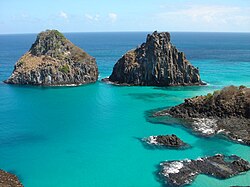United States

- Albemarle Sound in North Carolina
- Anna Maria Sound in Florida
- Back Sound in eastern North Carolina
- Block Island Sound between Block Island and mainland Rhode Island
- Bogue Sound in North Carolina
- Breton Sound in Louisiana
- Broad Sound near Boston, Massachusetts
- Calibogue Sound in South Carolina
- Chandeleur Sound between mainland Louisiana and the Chandeleur Islands
- Core Sound between the mainland of North Carolina and Core Banks
- Croatan Sound in Dare County, North Carolina
- Cross Sound in Alaska
- Currituck Sound in North Carolina and Virginia
- Frederick Sound in the Alexander Archipelago in Southeast Alaska
- Fishers Island Sound between Fishers Island, New York and Connecticut
- Hobe Sound in Florida
- Kotzebue Sound in Alaska
- Long Island Sound between Long Island, New York and Connecticut
- Mississippi Sound in Mississippi and Alabama
- Nantucket Sound off Nantucket, Massachusetts
- Norton Sound in Alaska
- Ossabaw Sound near Savannah, Georgia
- Pamlico Sound in North Carolina
- Pine Island Sound near Cape Coral, Florida
- Plum Island Sound in Plum Island, Massachusetts
- Port Royal Sound in Beaufort County, South Carolina
- Prince William Sound in Alaska
- Puget Sound in Washington
- Rhode Island Sound off Rhode Island
- Roanoke Sound in North Carolina
- St. Catherine's Sound in Liberty County, Georgia
- Saint Helena Sound near Beaufort, South Carolina
- Salem Sound near Salem, Massachusetts
- St. George Sound in Appalachicola Bay, Florida
- St. Simons Sound in Glynn County, Georgia
- Salisbury Sound in the Alexander Archipelago in Southeast Alaska
- Santa Rosa Sound in the Florida Panhandle
- Sitka Sound near Sitka, Alaska
- Somes Sound in Mount Desert Island, Maine (arguably a fjard)
- Tangier Sound in Maryland & Virginia on Chesapeake Bay
- Vineyard Sound off Martha's Vineyard, Massachusetts
- Wassaw Sound near Savannah, Georgia
United States Virgin Islands
- Pillsbury Sound between Saint Thomas and Saint John

